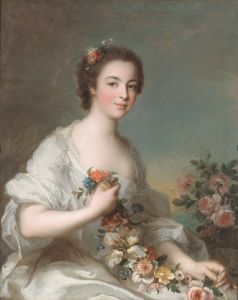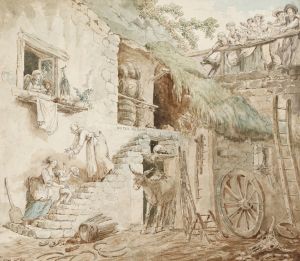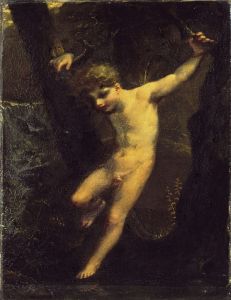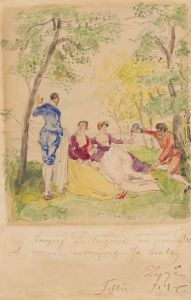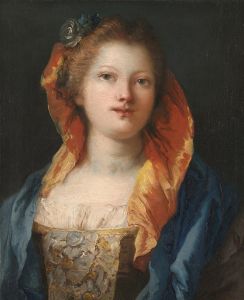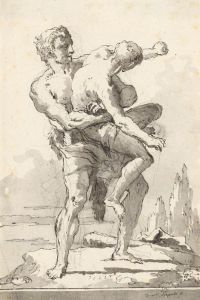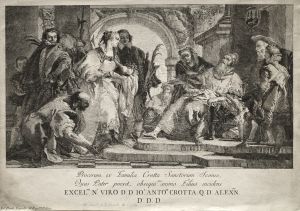
Flora And zephyr
A hand-painted replica of Giovanni Domenico Tiepolo’s masterpiece Flora And zephyr, meticulously crafted by professional artists to capture the true essence of the original. Each piece is created with museum-quality canvas and rare mineral pigments, carefully painted by experienced artists with delicate brushstrokes and rich, layered colors to perfectly recreate the texture of the original artwork. Unlike machine-printed reproductions, this hand-painted version brings the painting to life, infused with the artist’s emotions and skill in every stroke. Whether for personal collection or home decoration, it instantly elevates the artistic atmosphere of any space.
Giovanni Domenico Tiepolo was an Italian painter and printmaker, known for his vibrant and imaginative works that often depicted mythological and religious themes. He was the son of the renowned artist Giovanni Battista Tiepolo and followed in his father's footsteps, contributing significantly to the Venetian art scene in the 18th century. One of his notable works is "Flora and Zephyr," which showcases his skill in capturing the essence of mythological subjects with a distinct flair.
"Flora and Zephyr" is a painting that illustrates the mythological figures of Flora, the Roman goddess of flowers and spring, and Zephyr, the gentle west wind associated with the arrival of spring. This theme was a popular subject in art, symbolizing the renewal and rebirth associated with the spring season. Tiepolo's rendition of these figures is characterized by his use of light, color, and composition, which bring a sense of movement and life to the canvas.
The painting is a testament to Tiepolo's mastery of the Rococo style, which was prevalent during his time. This style is known for its ornate detail, lightness, and elegance, often featuring playful and romantic themes. In "Flora and Zephyr," Tiepolo employs a soft color palette, with pastel hues that enhance the ethereal quality of the scene. The figures are depicted with a sense of grace and fluidity, their forms intertwined in a dance that suggests both harmony and the gentle nature of the subjects they represent.
Tiepolo's technique in this painting reflects his ability to blend the real with the fantastical. The figures of Flora and Zephyr are rendered with a naturalism that makes them relatable, yet they are also imbued with an otherworldly quality that elevates them to their mythological status. The background of the painting is often filled with lush, blooming flora, reinforcing the theme of spring and the life-giving force of nature.
Giovanni Domenico Tiepolo's work, including "Flora and Zephyr," is significant not only for its artistic merit but also for its contribution to the continuation and evolution of the Venetian painting tradition. His ability to convey complex mythological narratives with clarity and beauty has ensured his place in the history of art. While his father, Giovanni Battista Tiepolo, is often more widely recognized, Domenico's works stand as a testament to his individual talent and vision.
The painting is housed in various collections, and its exact location can vary as it may be part of traveling exhibitions or held in private collections. Tiepolo's works, including "Flora and Zephyr," continue to be studied and appreciated for their artistic and historical significance, offering insight into the cultural and aesthetic values of the 18th-century Venetian art world.





